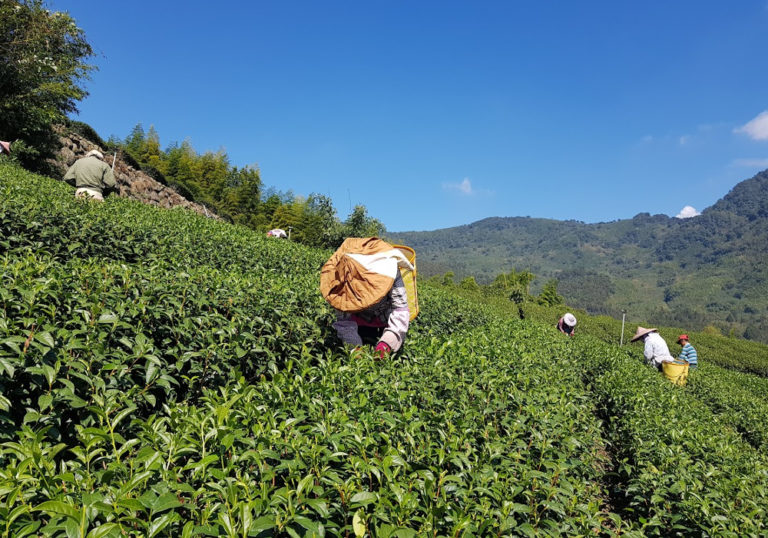12 food reasons to visit Japan
Culture Explorer uses affiliate links, including those from Amazon, which are identified using an *. If you buy something through the link at no extra cost to you, Culture Explorer may be paid a commission, which helps to fund running of the site. You can read more about this here.
Japan has many merits for the intrepid traveller: cherry blossoms, geishas, music festivals, shrines and temples, gardens etc. But for me there’s only one real motivation: food (and drink). So here are 12 reasons why I’d want to visit Japan.
1. Michelin dining
It’s a well reported fact that Japan has the highest number of Michelin-starred restaurants in the world, with the majority based in Tokyo and Kyoto. Some, including Narisawa and Nihonryori RyuGin, have also made it on to the World’s 50 Best Restaurants list. The amount of fine dining alone would keep you busy for a while though not all of its Michelin establishments fall under that category.
2. Teppanyaki
One classic style of Japanese cuisine is teppanyaki where food is prepared in front of the guests on a teppan grill. The flavours aren’t that dissimilar to stir-fry but it’s really the excitement of the performance which makes this dining experience unique; everyone remembers their first onion volcano.
3. Maid Cafés
Maid Cafés are cosplay restaurants, stemming from the manga culture in Japan. Aside from what you might expect in your average Japanese café, guests are also invited to play games and watch performances by the waitresses who dress up in maid outfits. It’s a seriously involved café experience that you won’t find anywhere else.
4. Fish markets
Japan is a nation that’s pretty serious about its fish. Its island formation has meant that fish has been the main component of its diet for centuries. That’s why it’s the sort of place where a single tuna will auction for hundreds of thousands of pounds. Tokyo is the place to find Tsukiji fish market, where tuna auctions take place, and it’s one of the largest wholesale food markets in the world.
5. Authentic sushi and sashimi
Speaking of fish, sushi and sashimi are arguably Japan’s most popular food export to be found on high streets up and down the country in the world. Where better, though, to find authentic sushi and sashimi and sample the regional variations than in Japan itself?
6. Fugu
One famous sushi fish is fugu or pufferfish, whose toxicity has gained notoriety because of the almost certain death associated with any error in preparation. Japanese chefs go through extensive training, sometimes for more than a decade, before they are allowed to prepare fugu for consumption. If you are going to risk your life to eat something, best to do it right.
7. Beef
In the market for super premium beef, wagyu has really come into its own with even Asda pushing their own brand of the meat. Known for its slow rearing and superb marbling, wagyu promises an unique flavour. For the serious gourmet though, Kobe is the one to try and, as it’s only exported to Macau and Hong Kong, Japan is the place to find true authenticity.
8. Tea
The popular saying may be “not for all the tea in China” but Japan has its own tea culture too. Most well known is their traditional tea ceremony using matcha as the base tea. The extended ceremony is not only a demonstration of tradition and respect but also one of tea appreciation.
9. Sake and whisky
Sake is the obvious contender for the national drink of Japan. Traditional sake breweries can be found in selected prefectures around Japan where you can beg for a visit and learn about its production. Less well known is the popularity of whisky in Japan. Many whisky distilleries import barley from Scotland to produce whiskies in the Scotch style using Japanese natural spring water, winning them numerous international accolades.
10. Pastry
They, chefs that is, say that all the best pastry chefs in Japan have trained in France. Classical French training and Japanese dedication can only mean seriously good pastries. And pastries are extremely popular in Japan too. After all, Joel Robuchon has a chain of bakeries in Japan producing some very popular pastries.
11. Learn about stock
The humble stock may not seem like much but it’s the basis of the best soups, sauces and jus, especially in classically French cuisine. And increasingly, chefs of gastronomic kitchens are turning to Japanese style stocks for flavour inspirations. There are, it seems, many different things you can accomplish just by varying the quantity of bonito flakes and kombu in a dashi base.
12. Knives
For chefs, knives are the most important things in the kitchen and Japanese knives are often praised for the way they sharpen and keep their edge. These knives really do cut through tomatoes like butter. For serious cooks, there are also many different styles of blades for a multitude of slicing needs.






